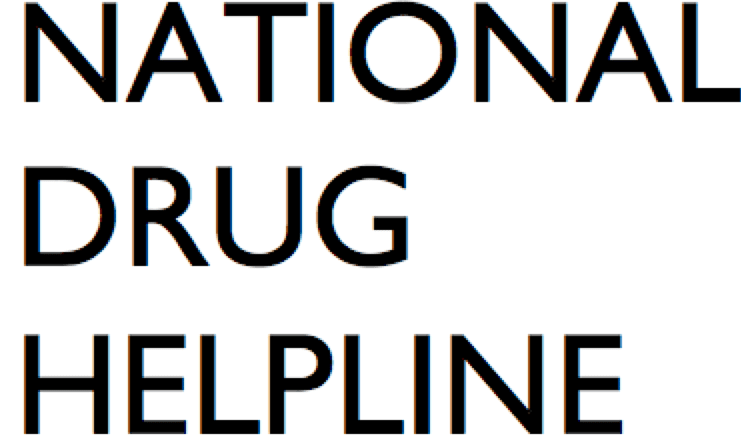Most people are aware that getting professional treatment for substance abuse can greatly improve the chances of a successful recovery and drug-free life. However, finding addiction treatment facilities can prove challenging. Which is why a Kansas drug addiction hotline can be of great help.
The National Drug Helpline is a toll-free 24/7 hotline number that you can access free of cost simply by dialing 1-844-289-0879. The helpline is staffed by trained operators who are available around the clock. Calling the helpline can give you immediate access to up-to-date information, guidance, and resources that meet your specific needs.
The drug and alcohol addiction helpline offers Kansas residents a non-judgmental, safe, and compassionate space to discuss concerns and obtain vital information. Your privacy and confidentiality are paramount and we ensure they are maintained throughout your interaction.
Call us today to find drug and alcohol rehabilitation facilities in Wichita, Overland Park, Kansas City, Olathe, Topeka, and other communities in Kansas.
KANSAS SUBSTANCE ABUSE RESOURCES
- Kansas Substance Use Treatment Services
- Alcoholics Anonymous Meetings in Kansas
- Kansas Prevention Collaborative
- State of Kansas Substance Abuse Policy
SUBSTANCE ABUSE BY YOUTH IN KANSAS
The Kansas Youth Risk Behavior Survey 2021 showed the following findings among 9th, 10th, 11th, and 12th graders in the state: [1]
ALCOHOL USE
- Percentage of students who had their first alcoholic drink before age 13 years: 14.2%
- Percentage of students who currently drank alcohol: 23.6%
- Percentage of students who were currently engaged in binge drinking on at least 1 day in the past 30 days: 13.3%
MARIJUANA USE
- Percentage of students who ever used marijuana: 23.4%
- Percentage of students who used currently used marijuana in the past 30 days: 11.5%
- Percentage of students who ever used synthetic marijuana (spice, K2, black mamba): 7.1%
PRESCRIPTION PAIN MEDICATION MISUSE
- Percentage of students who ever took prescription pain medications such as codeine, Vicodin, OxyContin, or Percocet without a doctor’s prescription or differently than prescribed: 10.6%
EXPOSURE TO DRUGS AND ALCOHOL
- Percentage of students who ever used inhalants: 9.8%
- Percentage of students who ever used methamphetamines: 3.4%
- Percentage of students who ever used ecstasy: 5.0%
- Percentage of students who were ever given or sold a drug on school property: 18.0%
SUBSTANCE ABUSE IN KANSAS
The Substance Abuse and Mental Health Services Administration (SAMHSA) reports the following with regards to substance use in Kansas:
YOUTH AGED 12-17 YEARS
- Past-month marijuana use was reported by 3.7% of adolescents in 2017-2019 compared to 8.1% in 2002-2004. During a similar timeframe, the US national average decreased from 7.9% in 2002-2004 to 6.8% in 2017-2019.
- Past-month alcohol use was reported by 10.4% of youth in 2017-2019 compared to 20.6% in 2002-2004. The US national average also showed a downward trend from 17.6% in 2002-2004 to 9.4% in 2017-2019.
- Past-month illicit drug use was reported by 5.2% of teenagers in Kansas aged 12-17 years in 2017-2019 compared to7.1% in 2015-2017. The US national average was stable at 8.2% during this time.
- Past-year initiation of substances (first lifetime use) was reported by youth as follows during 2017-2019: Alcohol 10.2% (US average 9.3%), marijuana 5.3% (US average 5.2%), and cigarettes 2.2% (US average 2.3%).
Marijuana, alcohol, and illicit drug use among adolescents in Kansas has shown encouraging downward trends between 2002 and 2019. These numbers are similar or lower than the US national average overall.
YOUNG ADULTS AGED 18-25 YEARS
The data for young adults aged 18-25 years in Kansas is as follows:
- Past-year marijuana use was reported by 29.4% of young adults in Kansas in 2017-2019 compared to 24.0% in 2002-2004. During a similar timeframe, the US national average increased from 28.7% in 2002-2004 to 35.0% in 2017-2019.
- Past-year marijuana use disorder was reported in 4.9% of young adults aged 18-25 years in Kansas in 2017-2019, compared to 4.7% in 2002-2004. The US national average changed from 6.0% in 2002-2004 to 5.6% in 2017-2019.
- Past-year opioid use disorder was reported in 1.4% of young adults in Kansas in 2017-2019 compared to 0.8% in 2015-2017. The US national average changed from 1.3% in 2015-2017 to 1.0% in 2017-2019.
- Past-year illicit drug use disorder was reported in 6.2% of Kansas residents aged 18-25 years in 2017-2019 compared to 4.6% in 2015-2017. The US national average was around 7.2% to 7.5% during this time period.
- Past-month binge alcohol use was reported by 37.9% of young adults in 2017-2019 compared to 38.9% in 2015-2017. The US national average in 2017-2019 was 35.4% showing binge alcohol use in Kansas is slightly worse than the country as a whole.
- Past-year alcohol use disorder among young adults aged 18-25 was reported in 10.4% of Kansas residents in 2017-2019, compared to 20.2% in 2002-2004. The US national average for 2017-2019 was 9.8%. Kansas therefore has a slightly higher percentage of young adults battling alcohol use disorder than the US as a whole.
- Past-year substance use disorder was reported in 13.8% of young adults aged 18-25 years in Kansas in 2017-2019 compared to 14.3% in 2015-2017. The national average has hovered between 15.1% and 14.7% during this time.
KANSAS RESIDENTS 12 YEARS OF AGE AND OLDER
The Behavioral Health Barometer also found the following for 2017-2019 in Kansas residents aged 12 years and older:
- Past-year marijuana use: 14.4% (US average 16.2%)
- Past-year marijuana use disorder: 0.9% (US average 1.6%)
- Past-year heroin use: 0.50% (US average 0.32%) for 2014-2019
- Past-year prescription painkiller misuse: 4.0% (US average 3.7%)
- Past-year opioid use disorder: 0.6% (US average 0.7%)
- Past-year illicit drug use disorder: 2.3% (US average 2.9%)
- Past-year alcohol use disorder: 5.0% (US average 5.3%)
- Past-year substance use disorder: 6.8% (US average 7.4%)
- Number of people enrolled in substance use treatment (single day counts for 2019): 10,492
- Number of people enrolled in opioid treatment programs (single day counts for 2019): 2,209
- Problems among people enrolled in treatment: 46.1% drug problem only, 16.0% alcohol problem only, 37.8% both drug and alcohol problems

CHALLENGES OF FIGHTING SUBSTANCE ABUSE IN KANSAS
Fighting substance abuse in Kansas, like in many other states in the US, presents several challenges that require attention and concerted efforts from various stakeholders. While progress has been made in addressing key issues, several difficulties remain, preventing people from getting effective intervention. Some of these challenges include:
ACCESSIBILITY TO TREATMENT
Limited availability of treatment facilities, long wait times, and inadequate insurance coverage often create barriers for Kansas residents seeking addiction treatment. In addition, people living in rural areas face additional difficulties due to a lack of specialized treatment facilities nearby and transportation issues.
PRESCRIPTION DRUG ABUSE
The misuse and abuse of prescription drugs, including opioids, continue to be a significant challenge in Kansas. Misuse or abuse of prescription drugs carries several risks, including addiction, overdose, and a subsequent transition to illicit substances. Addressing this issue requires a comprehensive approach, including increased education on proper medication use, implementing prescription drug monitoring programs, and enhancing the availability of medication disposal options.
SUBSTANCE ABUSE AMONG YOUTH
Substance abuse among young people in Kansas is a critical challenge. Factors such as peer pressure, lack of awareness about the consequences of substance abuse, and limited access to prevention programs contribute to this issue. Early intervention efforts, school-based prevention programs, and engaging parents, educators, and community members to promote healthy choices can help address this issue and provide support to at-risk youth.
CO-OCCURRING MENTAL HEALTH DISORDERS
Substance abuse often occurs in conjunction with mental health disorders such as depression, anxiety, and post-traumatic stress disorder (PTSD). The challenge lies in providing integrated treatment approaches that address both substance abuse and mental health conditions simultaneously. Coordinated efforts are needed among substance abuse treatment providers, mental health professionals, and healthcare systems to address this complex issue.
WHAT ARE SOME EFFECTIVE TREATMENT APPROACHES FOR SUBSTANCE ABUSE?
It is vital to employ evidence-based treatment approaches that have been proven effective in helping people overcome addiction. Several approaches are recognized for their success rates, including cognitive-behavioral therapy (CBT), medication-assisted treatment (MAT), and support groups like Alcoholics Anonymous (AA) and Narcotics Anonymous (NA). By utilizing these evidence-based treatments, you can increase your chances of achieving long-term recovery and reclaiming control over your life.
COGNITIVE-BEHAVIORAL THERAPY (CBT)
CBT is a widely recognized treatment approach for people battling addiction. It focuses on understanding the relationship between thoughts, feelings, and behaviors. Through CBT, you can identify and modify negative thought patterns and develop healthier coping mechanisms. By challenging self-destructive beliefs and learning new skills, you can address the root causes of your substance abuse and develop effective strategies to prevent relapses. CBT equips you with the tools to manage cravings, develop problem-solving skills, and enhance your overall well-being.
MEDICATION-ASSISTED TREATMENT (MAT)
MAT combines the use of FDA-approved medications with counseling and behavioral therapies to treat substance abuse. This approach is particularly effective for individuals struggling with opioid or alcohol addiction. Medications such as methadone, buprenorphine, and naltrexone can help reduce withdrawal symptoms, cravings, and the risk of overdose. Combined with counseling, MAT offers a comprehensive approach to recovery, providing you with the vital support you need to maintain abstinence and make positive lifestyle changes.
SUPPORT GROUPS
Support groups like Alcoholics Anonymous (AA) and Narcotics Anonymous (NA) play a vital role in promoting long-term recovery. These 12-step programs provide a supportive environment where you can connect with others who have faced similar challenges. By attending regular meetings, you can share your experiences, gain insight from others, and receive encouragement and guidance. The 12-step philosophy encourages self-reflection, acceptance, and accountability, empowering you to develop a sober support network and work through the underlying issues that contribute to addiction.
It is worth noting that to yield the best outcomes, an effective addiction treatment should consist of an individualized treatment plan tailored to your specific needs. Treatment providers may combine different evidence-based approaches or incorporate additional therapies like motivational interviewing, family therapy, or mindfulness-based practices. The key is to find a treatment program that aligns with your goals, preferences, and circumstances, ensuring a personalized approach to your recovery journey.
Call the National Drug Helpline on 1-844-289-0879 today and find effective addiction treatment, including the necessary tools, support, and skills to navigate the challenges of recovery successfully. It is very important to get professional guidance when considering treatment options. We can assess your unique situation and recommend the most suitable treatment facilities near you that will meet all your needs.
- Centers for Disease Control and Prevention. Kansas Youth Risk Behavior Survey 2021. Available online. Accessed on July 17, 2023.
- SAMHSA. Behavioral Health Barometer Kansas. Available online. Accessed on July 17, 2023.
Last updated: July 25, 2023
